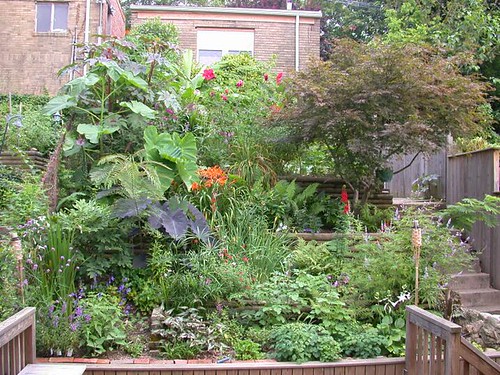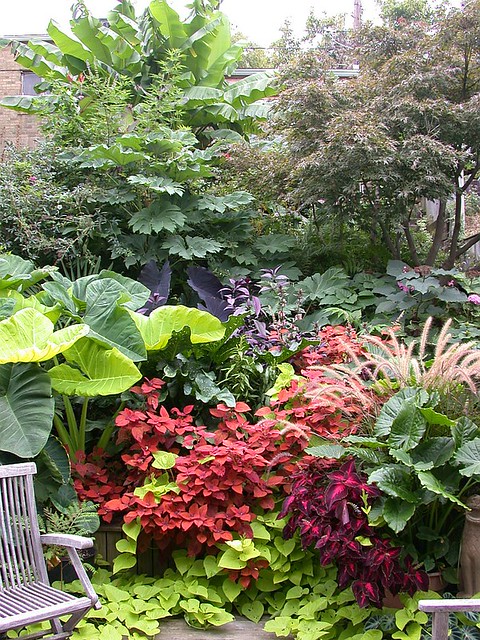
Summer may have ended (and with it our
rooftop cocktails on warm evenings) but we'll continue enjoy our deck on warm days well into November, and even occasionally through the winter. We talked for years about putting a rooftop deck on our Washington, DC rowhouse and a few years ago we decided to make it happen.* This photo, taken by our architect's photographer shortly after the renovation was completed, gives a better idea of how the deck relates to the interior of the house:
 Photo: Michael K. Wilkinson
Photo: Michael K. Wilkinson
The roof extends to provide shelter from sun and rain but floods the interior with light all winter when the sun is lower in the sky. The deck is a wonderful place to sit on a summer evening, and on all but the hottest evenings we get a refreshing breeze.

The deck feels surprisingly private thanks to the numerous mature trees in the neighborhood, which block the view of most of our neighbors. We even have a view of the National Cathedral (although the view would be better if our neighbors down the row didn't also have a deck!).

As much as we love the rooftop deck, gardening has proven to be a challenge because many plants simply can't take the sun, the wind, and the heat. The ones that do survive need watering nearly every day, and in hot sunny weather sometimes twice a day. Don't even think about rooftop gardening unless you have a water source! (A rooftop spigot was part of our design.) Among the plants that have done well are
Pennisetum setaceum 'Rubrum':

gaura:

and cannas:

BTW this is the first time I've ever had success with gaura! It detests heavy, wet soils and will not tolerate any shade whatsoever. The grueling conditions on the rooftop seem to suit it, and unlike many of the other plants it's a hardy perennial and doesn't need to be re-planted every year. It blooms from late spring right up until frost, the only drawback being that the flowers fade by mid-day. I've been pleasantly surprised by my success with cannas because they get so big, and so potbound, and need watering so frequently, yet they tolerate the occasional drying out and look great up until frost. The biggest problem is that they tend to get top-heavy and blow over in high winds!
Of course one of my favorite things about the rooftop deck will always be the view of the back garden:

* Our rooftop deck was part of a major home renovation project several years ago, including a new master bedroom suite that was featured on an
episode of HGTV's "Bang For Your Buck" earlier this year (tune in on Nov. 15 when the episode is scheduled to run again). Our roof deck was also featured on the
"Prince of Petworth" blog.
































